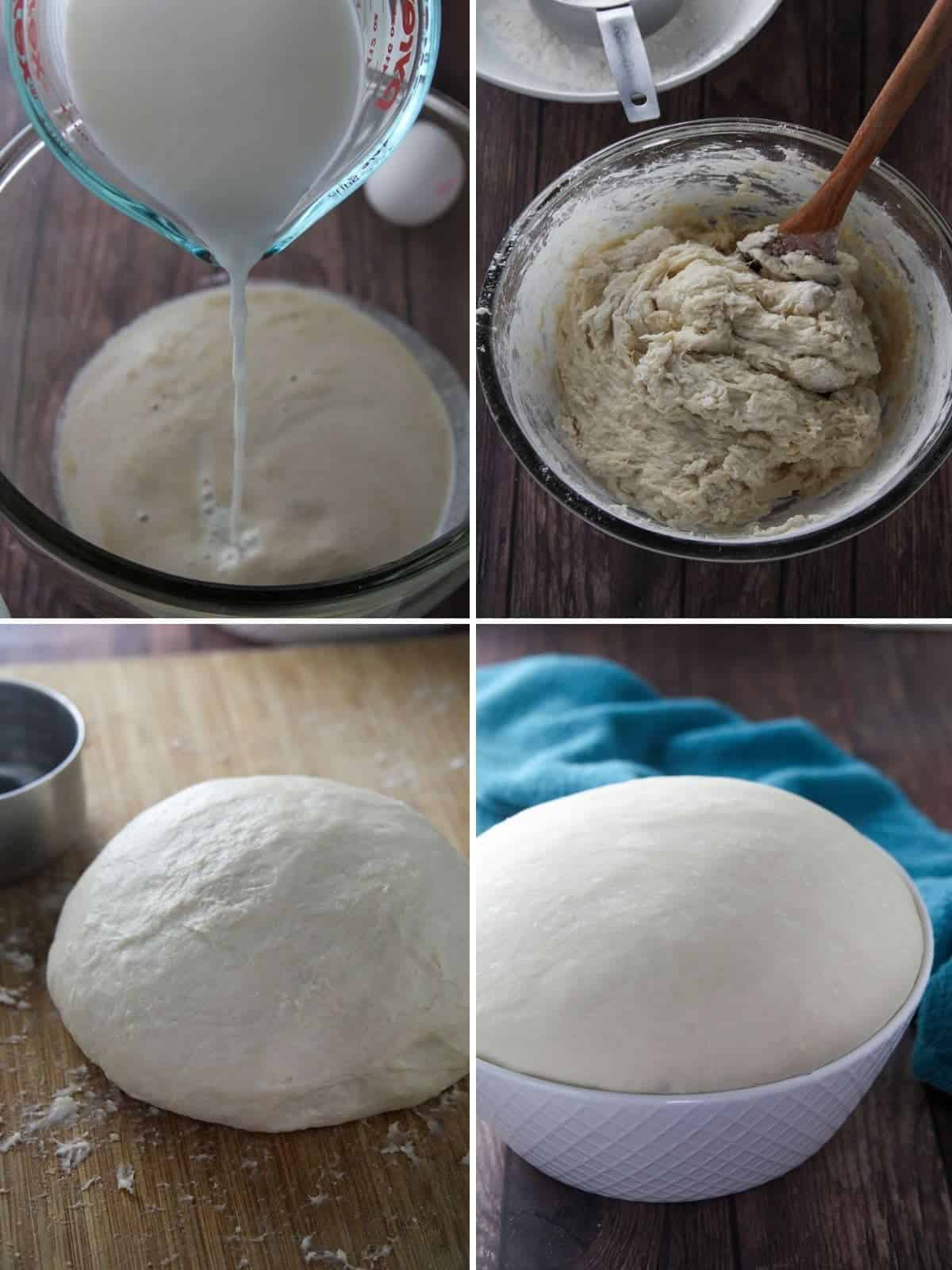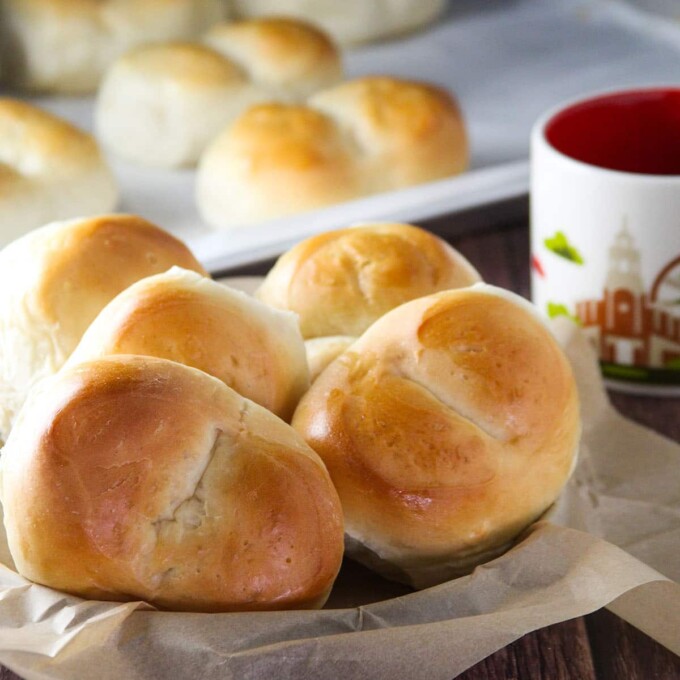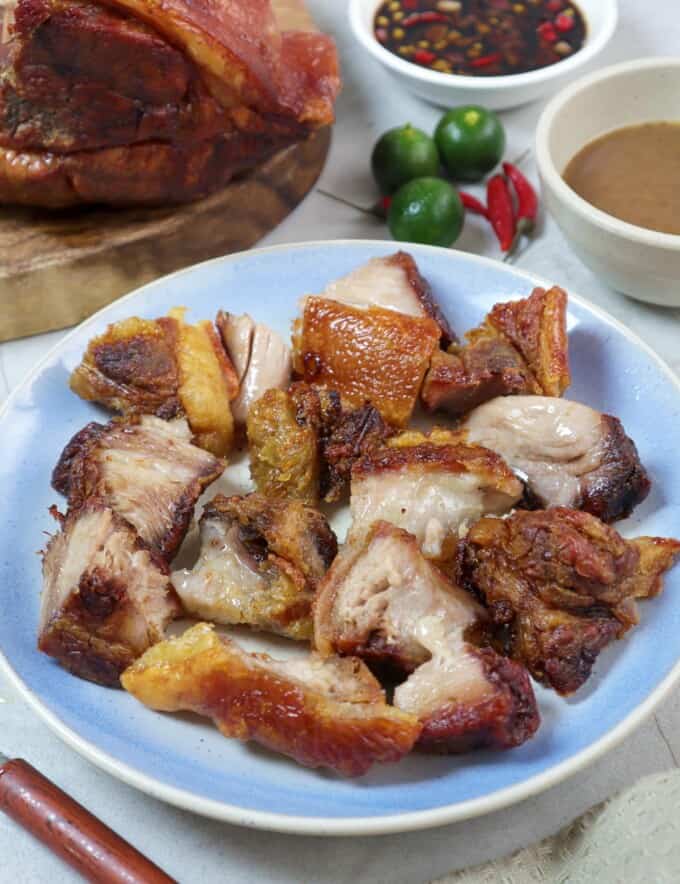Love the aroma and taste of freshly baked bread? Make this panaderia favorite at home! Monay is a slightly sweet, hearty bread roll perfect for breakfast or merienda. Delicious with butter, jam, or your favorite spread!

I have plenty of baked goods recipes coming soon, and in fact, if you're up for some serious baking this weekend, check out lengua de gato and otap already posted on the blog. Today, however, is all about a classic Filipino bread, monay.
Nothing beats the warmth of fresh bread hot out of the oven. If you enjoy the comforting aroma of a newly baked loaf in your kitchen, you're in luck because this is the perfect baking project for you!

What is monay
Monay is the local adaptation of the Spanish Pan de Monja, which translates to nun's bread. It's a slightly sweet, heavy, and dense bun with a deep partition in the center, creating two cheeks.
It's also known as the "mother of all Filipino bread" as its dough is the base for other types of bread such as the putok or star bread and pinagong. These buns share the same dense texture but have their own distinctive shapes from scoring. While the monay is divided into two halves, the putok has a cracked top, and the pinagong is cut into a turtle form.

Ingredient List
- Active dry yeast- you can substitute instant dry yeast in equal amounts. If using instant, there's no need to proof the yeast and mix all the ingredients at one time (straight dough method).
- Sugar- enhances flavor and "feeds" the yeast
- Water- rehydrates or dissolves the yeast
- Milk- creates a richer flavor and softer crust; it helps the bread brown more quickly.
- Butter- adds flavor, results in a higher rise and crisper crust, and extends shelf life.
- Egg- makes yeast bread richer and provides color and volume.
- All-purpose flour- the recipe was developed using AP flour as it's more readily available in most households. You can use bread flour without change to the recipe, but note that the buns will have a denser texture due to the higher protein in bread flour.
- Dry milk powder- adds a creamy, milky taste and softens the texture.
- Salt- enhances flavor, helps with gluten structure, improves crust color, and regulates yeast fermentation for a slow, steady rise.
- Egg wash- gives the crust a golden brown color and sheen

Baking tips
- Make sure the temperature of the water used for proofing is within 105 F to 115 F as hot liquids will kill the yeast.
- The purpose of activating or proofing the yeast is to ensure it’s alive and active before proceeding with the recipe. If bubbles don’t appear on the surface of the mixture after about 6 to 10 minutes, it might be the liquid is too hot or the yeast is too old.
- Gently turn over the dough in a lightly grease bowl and swipe around the insides of the bowl to oil the top of the dough so it doesn't dry out.
- Allow to rise in a warm, draft free location. Too cool temperatures will retard yeast fermentation and increase the rise time. Too hot temperatures might kill the yeast and keep the dough from rising.
- For a uniform size, portion the dough by weight. Our recipe yields 12 pieces at about 70 grams each.

The windowpane test
Do a windowpane test to check if the dough has been kneaded enough. Take a small portion of the dough and stretch with your fingers to form a translucent square in the center. If the dough can stretch without breaking, the gluten is well-developed, and the dough is ready to rise.
The ripe test (first rise)
To check if the dough has risen enough, do a ripe test. Gently stick two fingers in the risen dough to the second knuckles and then take out. If the indentations remain, the dough is ready to be punched down.

How to serve
Growing up, one of my favorite memories was making panaderia runs with my cousins after our afternoon siesta. We'd head back to our ancestral home carrying a brown bag of hot monay, eager to bite into one generously slathered with Chez whiz or coco jam. The buns were the perfect merienda paired with an ice-cold glass of Tang!
How to store fresh bread
- Homemade bread has no preservatives, so it doesn't have as long a shelf life as commercial bread. Stored in an airtight container, it will last at room temperature for about 3 to 4 days.
- For more extended storage, wrap buns tightly with film, place in a resealable bag, and freeze them.
- When ready to enjoy, thaw and reheat in a toaster oven.
Ingredients
- ¼ cup water (105-115 F)
- 2 ¼ teaspoons active dry yeast
- ¼ cup sugar
- ¾ cup warm milk
- 1 egg
- ¼ cup melted butter
- ¼ cup powdered milk
- 1 teaspoon salt
- 4 cups all-purpose flour
Egg wash
- 1 egg
- 1 tablespoon milk
Instructions
- In a large bowl, add the warm water. Sprinkle the yeast and about one teaspoon of the sugar. Let the mixture sit for about 5 minutes or until thick and foamy.
- Add the egg, butter, warm milk, dry milk powder, the remaining sugar, and salt. Using a wooden spoon, stir until blended.
- Add the flour and stir with a wooden spoon until a shaggy dough forms.
- Turn the dough over on a flat working surface and knead for about 10 to 15 minutes or until smooth and elastic, lightly dusting hands with flour as needed to keep the dough from sticking.
- Lightly oil a large bowl. Shape the dough into a ball and gently turn it over and gently swipe on the inside of the bowl to oil the top. Then flip and place in the bowl, oiled side up.
- Cover with a clean towel and let the dough rise for 1 hour or until double in size.
- Gently deflate the dough by punching down. Turn over on the working surface and gather into a ball. Cut the dough into halves and cut each half into 6 portions.
- Using the palm of your hands, roll each dough into a smooth ball.
- Arrange the balls in a single layer on a parchment-lined baking sheet, leaving about 2 inches of space in between.
- Using a sharp knife or scissors, make a deep cut in each ball halfway, but not all the way through.
- Loosely cover with a clean towel and let rest for about 10 minutes.
- Meanwhile, preheat the oven to 350 F.
- In a small bowl, make the egg wash by combining 1 egg and 1 tablespoon milk. Whisk until well-blended.
- Brush the tops of the buns with the egg wash and bake for 20 to 25 minutes, or until lightly golden on top.
Notes
- Ensure the water temperature for proofing is between 105 F to 115 F, as hot liquids will kill the yeast.
- The purpose of activating or proofing the yeast is to ensure it's alive and active before proceeding with the recipe. If bubbles don't appear on the surface of the mixture after about 6 to 10 minutes, it might be the liquid is too hot or the yeast is too old.
- Gently turn over the dough in a lightly greased bowl and swipe around the insides of the bowl to oil the top of the dough, so it doesn't dry out.
- Allow to rise in a warm, draft-free location. Too cool temperatures will retard yeast fermentation and increase the rise time. Too hot temperatures might kill the yeast and keep the dough from rising.
- For a uniform size, portion the dough by weight. Our recipe yields 12 pieces at about 70 grams each.
Video

Nutrition Information
“This website provides approximate nutrition information for convenience and as a courtesy only. Nutrition data is gathered primarily from the USDA Food Composition Database, whenever available, or otherwise other online calculators.”





CHE says
hello i just wanna ask if what is NAME OF JOURNALIST PUBLICATION of this and who is the AUTHOR of this. (para po to sa research ko huhu)
Ahmad Merat says
Hello. I’m a foreigner. I live here, in Manila. Most of the recipes for brea are not the same bakeries. But thank you.
Sherill says
Hi!
What milk do you use evaporated milk or fresh milk?
Thank you